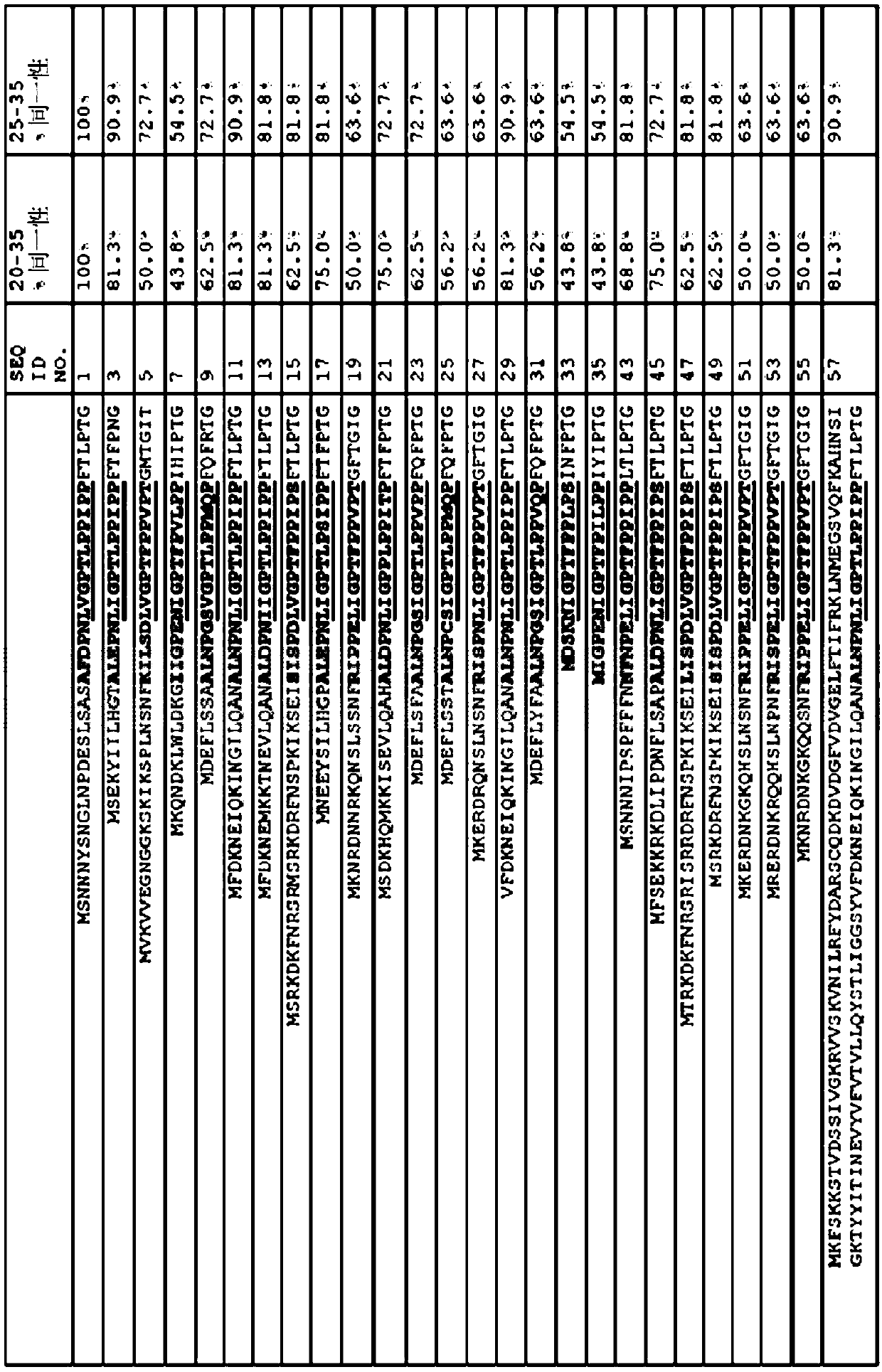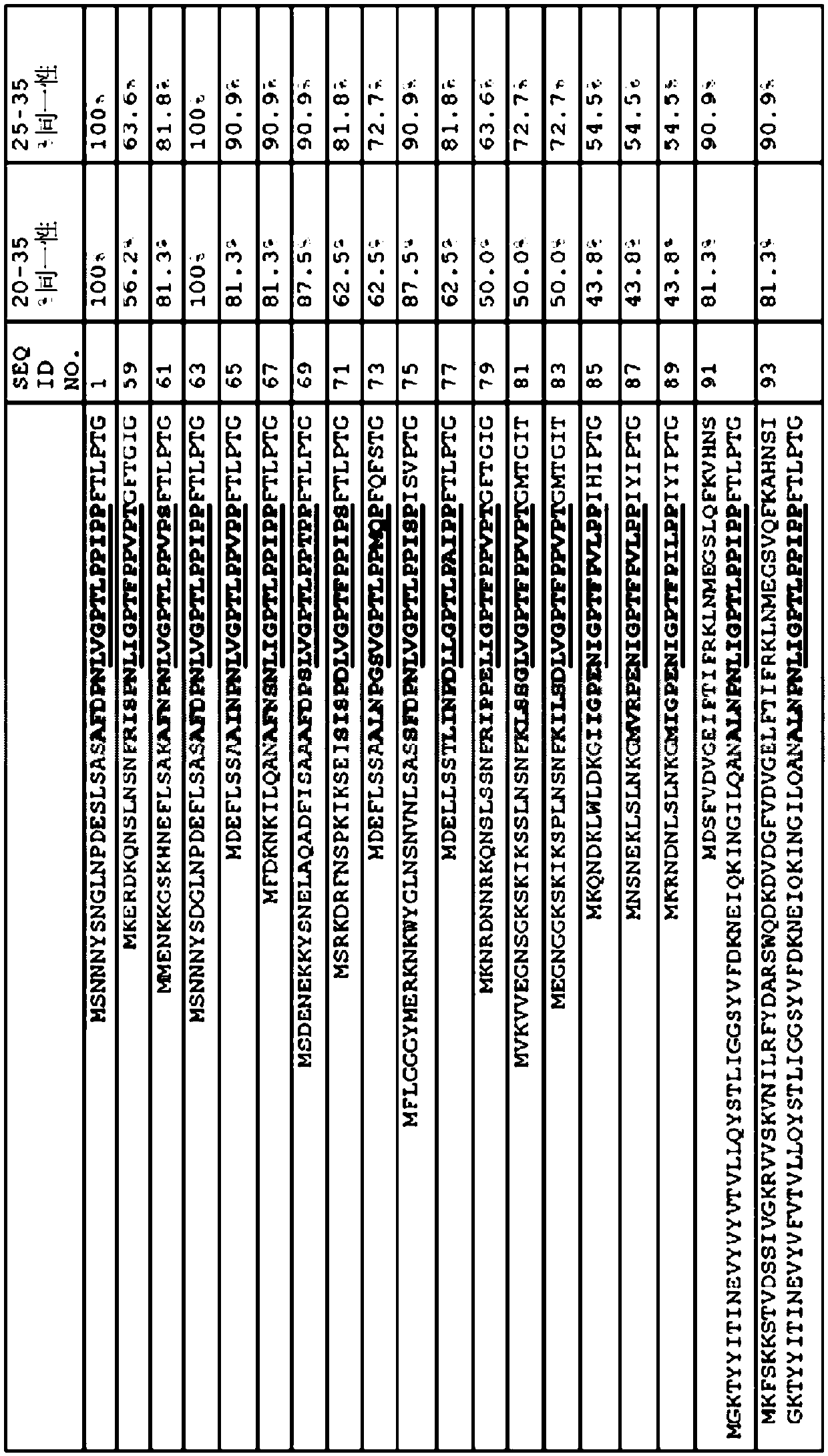Fusion proteins, recombinant bacteria, and exosporium fragments for animal health and aquaculture
A technology of fusion protein and spore wall, applied in the field of fusion protein, can solve the problems of affecting milk, not reducing the incidence of mastitis, pollution, etc.
- Summary
- Abstract
- Description
- Claims
- Application Information
AI Technical Summary
Problems solved by technology
Method used
Image
Examples
Embodiment 1
[0850] Example 1. Use of various targeting sequences to express lipase on the surface of Bacillus thuringiensis
[0851] A wide variety of targeting sequences with high homology to amino acids 20-35 of BclA (amino acids 20-35 of SEQ ID NO: 1 ) can be used to display enzymes, proteins, and peptides on the surface of Bacillus cereus family members. Several targeting sequences were compared by making fusion proteins containing the targeting sequence linked to B. subtilis lipase. The fusion construct was synthesized using the native promoter of the targeting sequence, cloned into replicating plasmid pMK4, and introduced into Bacillus thuringiensis BT013A. Bacillus thuringiensis BT013A was deposited with the United States Department of Agriculture (USDA) Agricultural Research Service (ARS) on March 10, 2014 at 1815 North University Street, Peoria, Illinois 61604 USA, and assigned NRRL deposit number B-50924. Bacillus thuringiensis BT013A is also known as Bacillus thuringiensis 4Q7...
Embodiment 2
[0856] Example 2. Use of various exosporium sequences to express lipases on the surface of Bacillus thuringiensis and demonstrate localization of fusion proteins on the surface of the exosporium
[0857] A wide variety of exosporium proteins are available for displaying enzymes, proteins, and peptides on the surface of members of the Bacillus cereus family. Several different exosporium proteins were compared by preparing fusion proteins as described in Example 1 containing the exosporium protein linked to B. subtilis lipase. Fusion constructs were synthesized using the native promoter for exosporium proteins shown in Table 5 below, cloned into replicating plasmid pMK4, and introduced into B. thuringiensis BT013A. Spores displaying various exosporium protein-Bacillus subtilis 168 lipase fusions were plated on nutrient agar plates by growing transformed bacteria in brain heart infusion broth under selection pressure from 10 μg / ml chloramphenicol and incubated at 30°C for 3 days...
Embodiment 3
[0863] Example 3. Expression of endoglucanases on the surface of spores of members of the Bacillus cereus family using various targeting sequences
[0864] Cloning by homologous recombination PCR of the BclA promoter, start codon, and amino acids 20-35 of BclA (amino acids 20-35 of SEQ ID NO: 1 ) fused in-frame to the Bacillus subtilis 168 endoglucanase The resulting fragment was used to modify the pSUPER plasmid (pSUPER-BclA 20-35-Endo) (as described in Example 8 below). A PCR fragment was generated containing the BclA promoter (SEQ ID NO: 149) fused in frame to the Bacillus subtilis 168 endoglucanase, the start codon, and amino acids 20-35 of BclA. These PCR fragments were digested with XhoI and ligated into the SalI site of pSUPER plasmid to generate plasmid pSUPER-BclA 20-35-endoglucanase. This plasmid was then subjected to inverse PCR to amplify the entire plasmid backbone, but not the sequence corresponding to amino acids 20-35 of BclA. This inverse PCR product was com...
PUM
| Property | Measurement | Unit |
|---|---|---|
| molecular weight | aaaaa | aaaaa |
Abstract
Description
Claims
Application Information
 Login to View More
Login to View More - R&D
- Intellectual Property
- Life Sciences
- Materials
- Tech Scout
- Unparalleled Data Quality
- Higher Quality Content
- 60% Fewer Hallucinations
Browse by: Latest US Patents, China's latest patents, Technical Efficacy Thesaurus, Application Domain, Technology Topic, Popular Technical Reports.
© 2025 PatSnap. All rights reserved.Legal|Privacy policy|Modern Slavery Act Transparency Statement|Sitemap|About US| Contact US: help@patsnap.com



